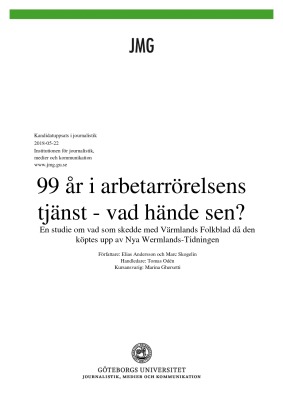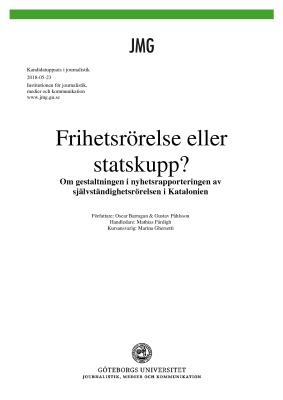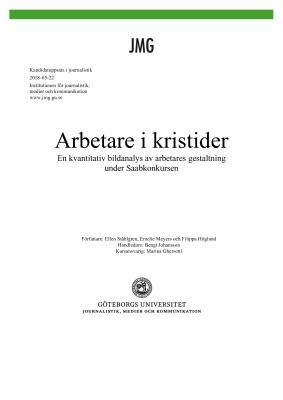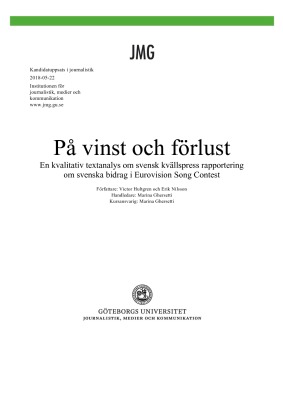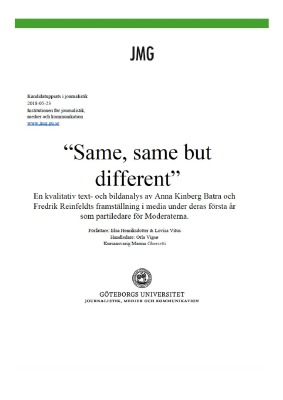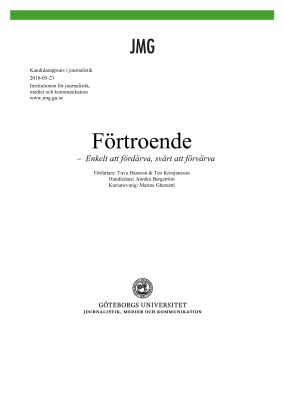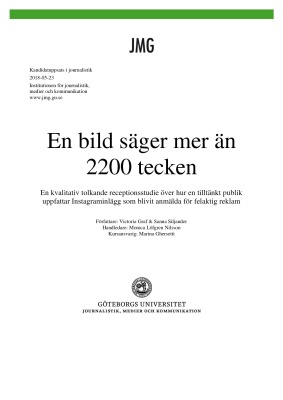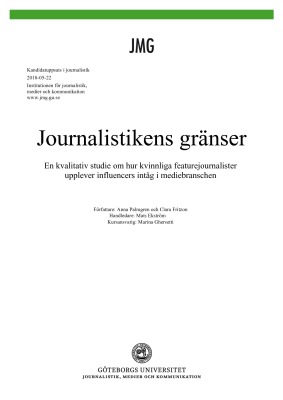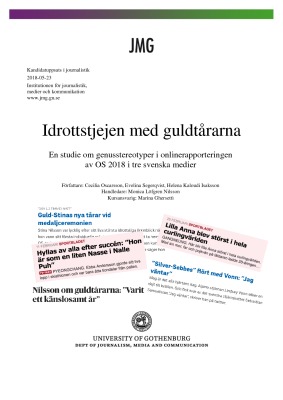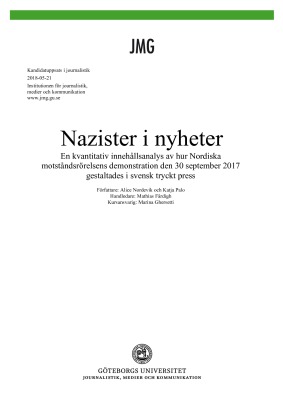The purpose of this study is to examine how the acquisition of the newspaper Värmlands Folkblad by their largest regional competitor affected the content of the news in Värmlands Folkblad. These effects are studied by examining the subjects, the places and the actants that are represented in the news, before and after the acquisition.
To further understand the situation, this study uses theories about diversity, market concentration, commercialization and how outer factors affect the news. These theories help to better understand the situation and how the media market is changing and how it might affect the content of the news. There is some earlier research in this subject area that is relevant to this study. There is not a conclusive answer on what market concentration does to the content of the news, some researchers claim that it in some ways can be good for diversity, other researchers disagree. This study adds to the already existing research and gives valuable contribution to the subject area.
The study uses a quantitative method of content analysis. 2574 articles were coded in three periods before and three periods after the acquisition. As a complement to the content analysis, several people with insight in the situation were interviewed. These people contributed with background information which helped to better understand the results from the content analysis.
The results of the content analysis show that there have been no significant changes to the content of the news in the studied newspaper. Some organizational changes have been made that can be connected to theories about how outer factors affect the content of the news. The largest change can be found in the sports editorial. Three sport reporters lost their jobs and some of the sport coverage is now made by the larger newspaper. Hence the biggest change in subjects and actants is found in the variables sports and athletes. However this change is not substantial and the most important results of this study is that there has not been any major change. Therefore the acquisition could be seen as successful as there is no big change to the diversity of the regional media market. It is important to keep in mind that the time frame for this study is quite limited, which means that we cannot make any conclusions about the long-term effects of this acquisition.

